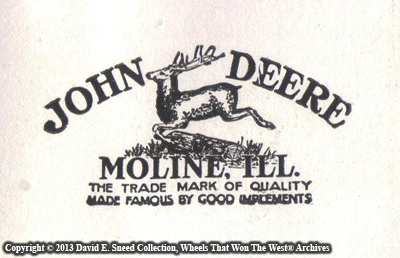During the late 1800’s and very early 1900’s, JohnDeere was relatively content to sell other nationally recognized brands likeMitchell, Fish Bros., Old Hickory, and Moline. In fact, even before Deere began building their own wagons, their branchhouses in various parts of the country were selling other brands and evenprivate labeling their own. “Deere &Weber” was one private label and serves as a good example of how a branch housecould take full advantage of opportunities to sell even more wagons.
While the corporate office helped marketwell-known, non-Deere brands, other wagon makers also saw sales potential andworked to curry the favor of John Deere and the large branch distributors. Among those suitors was an upstart firm bythe name of “Keller.” Located in Joplin,Missouri, the Keller Manufacturing Company is purported by some sources to havestarted in 1908. However, as shownbelow, we came across this January 1907 report in The Carriage Monthlyindicating that the firm was already in business at least a year earlier.
“The Keller Mfg. Co.,Joplin, Mo., who have recently completed a large wagon plant, 100 x 450 feethave just made their first shipment of wagons to the John Deere Plow Co.,Omaha, Neb. The plant has a capacity toturn out 5,000 wagons monthly. Atpresent, there are 700 wagons in process of manufacture, and orders are on filefor 3,000 more.”
The report doesn’t list how many wagons were sent tothe Deere branch. However, it appears they had little chance to send many more. Unfortunately for Keller, John Deere wasabout to finally devote some serious resources to making their own wagons. By the time of the above report, Deere was inthe process purchasing the Fort Smith Wagon Company. Three years later, Deere bought the MolineWagon Company and a year after that the Davenport Wagon Company became part ofthe business. Wagon sales were strongand Deere was looking to optimize opportunities by creating its own wagonbrands; ultimately allowing greater control over quality, costs, and profits. By all indications, the company wasted nomore time in getting their name on the side of these vehicles. Near the time of the Ft. Smith acquisition,the first ‘John Deere’ branded wagons began to be promoted for the legendaryMoline, Illinois firm.
It was a move that, no doubt, negatively affectedthe young Keller operation as it did not stay in business in Joplin. The plant was sold within a half dozen yearsof its opening to a firm specializing in the manufacture of whiskeybarrels. By 1913, the Joplin facilityhad ceased production of Keller wagons. If not for a few occasional references today, this business, like somany other early vehicle makers might have disappeared forever. For a brief time, though, they enjoyed theexcitement and benefits of being connected to one of America’s most iconic anddesirable brands.


